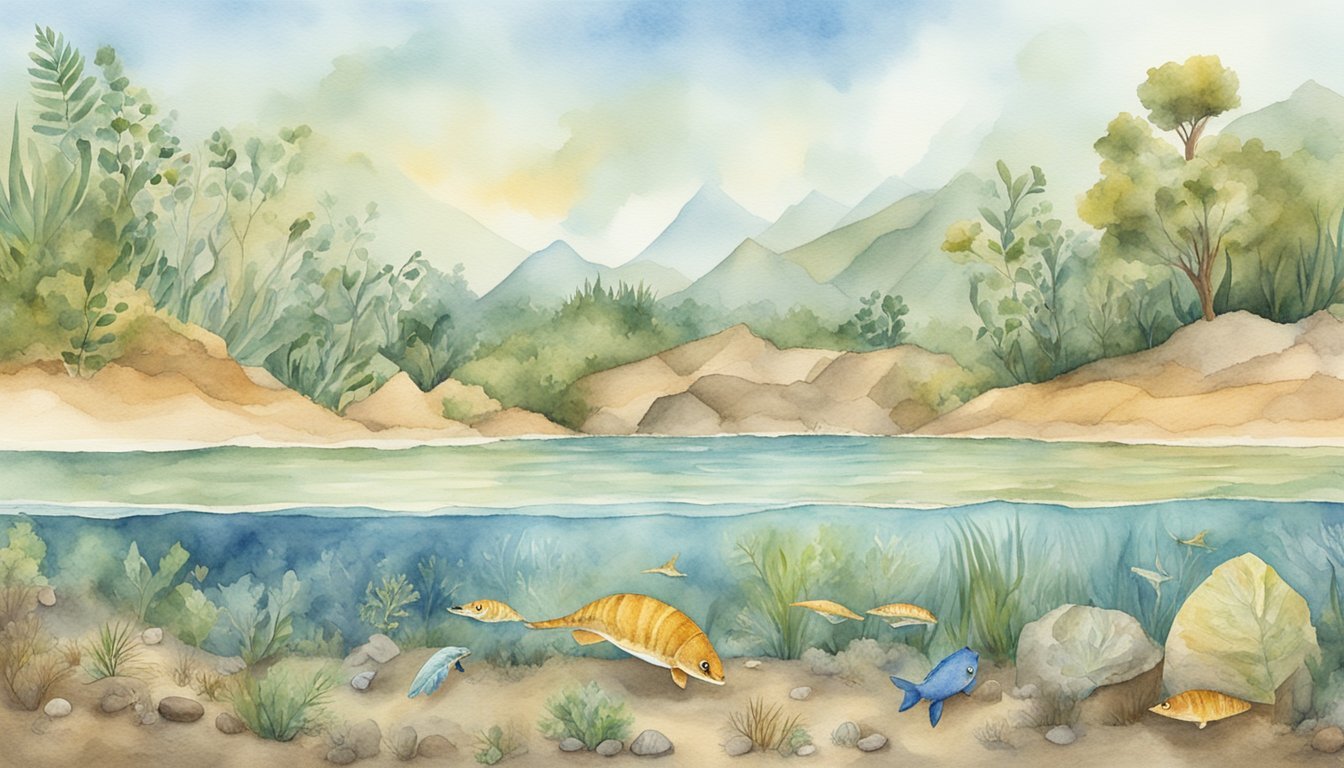Fundamentals of Evolution
Darwin’s Legacy
Charles Darwin, along with Alfred Russel Wallace, laid the groundwork for the theory of evolution. Darwin’s groundbreaking work, On the Origin of Species, introduced the idea of descent with modification and the concept of a common ancestor for all living organisms. As a result, he significantly impacted our understanding of biology and the diversity of life on Earth.
It is interesting to note that both Darwin and Wallace independently developed the idea of natural selection, but Darwin is usually the more attributed figure as his book was widely popular. Theodosius Dobzhansky, a prominent geneticist, once said, “Nothing in biology makes sense except in the light of evolution,” highlighting the importance of Darwin’s work in modern science.
Natural Selection and Variation
Natural selection is the mechanism behind evolution. According to this concept, individuals with traits that increase their chances of reproductive success are more likely to pass on those traits to their offspring. Over successive generations, these advantageous traits become more frequent, while less favorable traits may gradually disappear.
Genetic variation, which arises from mutations, sexual reproduction, and gene recombination, is essential for the process of evolution. It ensures that populations have enough diversity to adapt to changing environments. As a result, individuals with specific traits may be more adapted to an environment, ultimately improving their chances of survival and reproduction.
Genetic Mechanisms
Genetics is at the core of evolutionary theory. Gregor Mendel, the father of modern genetics, discovered the fundamental principles of inheritance that later became the foundation for understanding genetic variation and evolution. Key aspects of genetic mechanisms in evolution include gene mutations, sexual reproduction, and genetic drift.
Gene mutations are small changes in the DNA sequence that can introduce new alleles or genetic variations in a population. For instance, a mutation can change the frequency of existing alleles or create entirely new variants, affecting an organism’s traits or fitness.
Sexual reproduction also contributes to genetic variation by producing unique combinations of alleles through the process of gene recombination. Individuals inherit a random assortment of half of their parents’ alleles, which creates new combinations of traits in each generation.
Finally, genetic drift, or the random change in allele frequencies within a population, can also impact the evolutionary process. Genetic drift can lead to the loss or fixation of certain alleles, significantly affecting the genetic makeup of a population over time.
Understanding these genetic mechanisms provides insights into the process of evolution and helps explain the fascinating diversity observed in the natural world.
Evolutionary Evidence and Impact

Fossil Records and Comparative Anatomy
The fossil record provides crucial evidence for the theory of evolution. As organisms change over time, their remains or impressions are preserved, giving us a glimpse into the Earth’s history. Studying the fossil record allows us to trace the path of evolution and identify common ancestors. For example, whales evolved from land-dwelling mammals, and their transitional fossils show a gradual change in size, shape, and anatomy.
Comparative anatomy is another significant source of evolutionary evidence. By looking at the similarities and differences in the anatomy of various species, we can infer relationships between organisms. One notable example is the homologous structures found in the limbs of mammals, birds, and reptiles, which indicate a shared ancestry.
Molecular Biology and Genetics
Advancements in molecular biology and genetics have provided additional evidence to support the theory of evolution. DNA and protein sequences can be analyzed to determine the evolutionary relationship between different species. For instance, the similarity in DNA sequences between humans and chimpanzees indicates a shared ancestry.
Furthermore, the study of heredity and gene recombination demonstrates how genetic variation can lead to adaptations within a population, explaining why different organisms thrive in specific environments. The famous case of Darwin’s finches in the Galápagos Islands exemplifies how changes in the environment can drive the evolution of distinct species through natural selection.
Human Evolution and Modern Biodiversity
Human evolution is a captivating subject within the study of evolution. The hominid family tree has seen numerous discoveries over the years, revealing the complex history and branching patterns of our ancestors. By examining fossil records and genetic information, scientists have identified key milestones in human evolution, such as walking upright and the development of larger brains.
Modern biodiversity is a result of the ongoing evolutionary process, shaping the variety of life on Earth. The theory of evolution can be applied to better understand how plants, animals, and microorganisms interact with their environment and how they have adapted to survive. Studying evolutionary history can also shed light on the impact of human actions, such as habitat destruction and climate change, on the planet’s ecosystems.
In conclusion, the study of evolution provides a comprehensive framework through which we can learn about the history of life on Earth, understand current biodiversity, and make informed decisions for preserving ecological balance.

